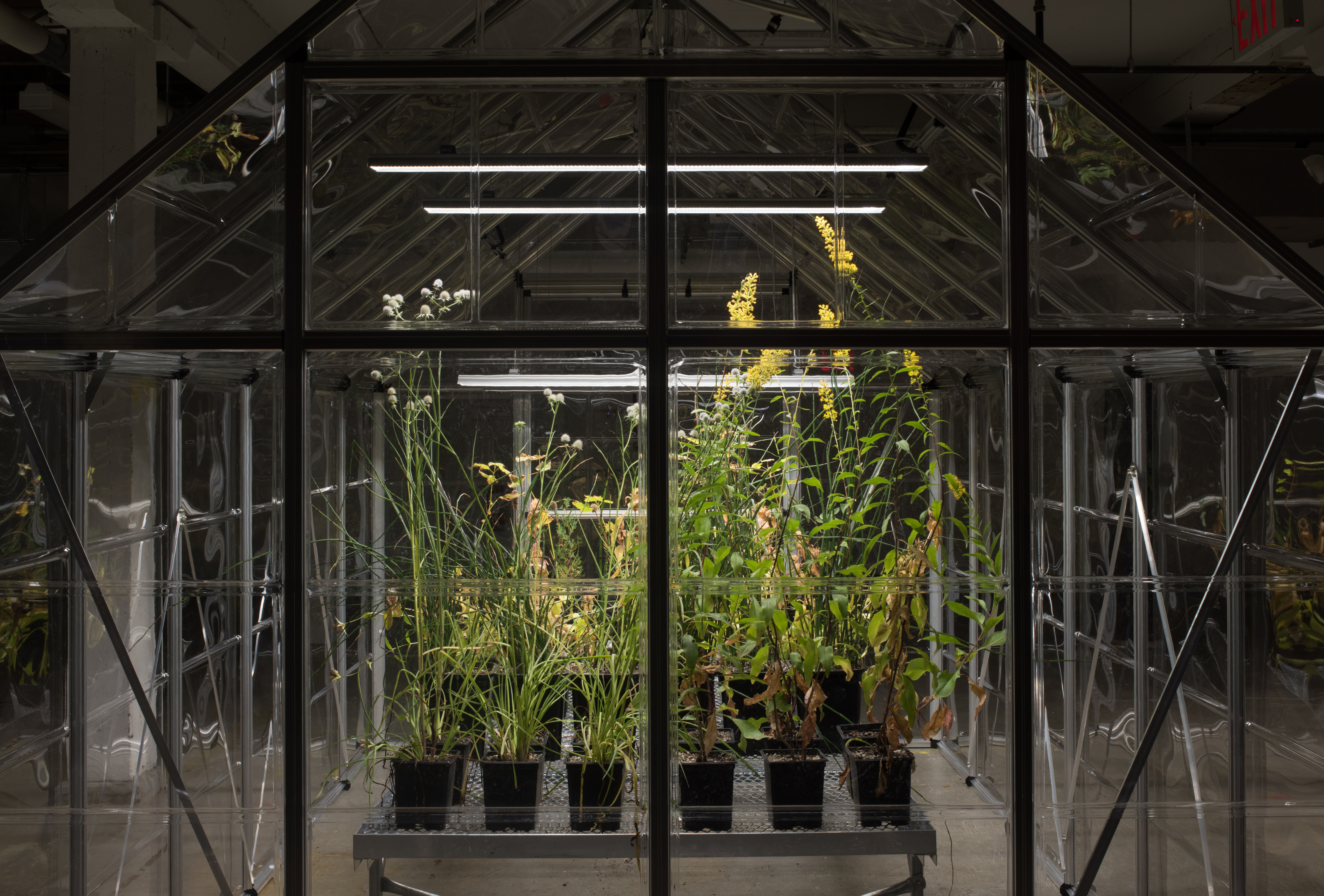Michael Wang: Extinct in New York | Fast Company
Oct 24 2019

Long ago, before the steady hum of foot traffic and omnipresent billows of rising subway steam filled its streets, New York City was a bustling but overgrown town—a small, soon-to-be metropolis in the midst of the natural world. The myriad marshlands and swamps along America’s East Coast were home to verdant ecosystems of flora and fauna, many of which no longer exist in the city today, the result of population growth and toxic air quality. In an effort to artificially reintroduce some of these extinct plants back into New York’s landscape, artist Michael Wang has created an installation of greenhouses for an inaugural exhibit at the Lower Manhattan Cultural Council’s Arts Center at Governors Island.
A collaboration between LMCC and Swiss Institute, Extinct in New York features four greenhouses lined up in a row like residences on a street and filled with 46 different plant, lichen, and algae species. As part of his research, Wang worked with the New York Botanical Garden—which, serendipitously, was also developing an institutional survey of the history of plants in the city—to unearth details about the flora that is now extinct within New York City. Every single plant in the gallery, from Baptisia tinctoria (Wild indigo) to Helianthus angustifolius (Swamp sunflower), was formerly a native New York species that no longer grows in any of the five boroughs. Inside Wang’s greenhouses, each has been resurrected and elevated to the status of art.
“I was looking at species that no longer exist in nature and only exist in captivity . . . ones that have been uprooted and only exist in labs and in botanical gardens,” Wang says. “[I’m interested in how] something natural can now be considered an artifact. I’m bringing horticulture into the space of high culture.”
Wang and the New York Botanical Garden established a simple criteria for naming a plant “extinct:” it hasn’t been seen in the wild in more than 15 years. The plants featured in the installation span from plants that disappeared in the 19th century to those that were lost in the 1990s. The exhibit is further supplemented by a collection of photographs, which show the locations in the city where each specimen was last collected, along with traditional botanical watercolor illustrations rendered by Wang. For instance, the vibrant “orange fringed orchid” was last collected in Idlewild, Queens, in 1940.
Inside the darkened arts space, Wang’s specimens float in vitrines filled with mysterious grey-green growing medium—they’re highly visible but just out of the viewer’s reach. “The greenhouses have a couple functions,” Wang says. “They kind of function like display cases, but they’re also environments that are creating the right conditions for the species because they have humidity and light.”
The industrial greenhouses stand in contrast to the flora inside, an intentional illustration of the tension between humans and biodiversity in New York City. The metal and glass structures “highlight the artifice of the systems,” Wang explains, that keep these once-ubiquitous plants alive.
“The big gesture of this work was to somehow materially bring these species back to New York,” Wang says. “The show becomes a kind of incubator.”
- Evan Nicole Brown
